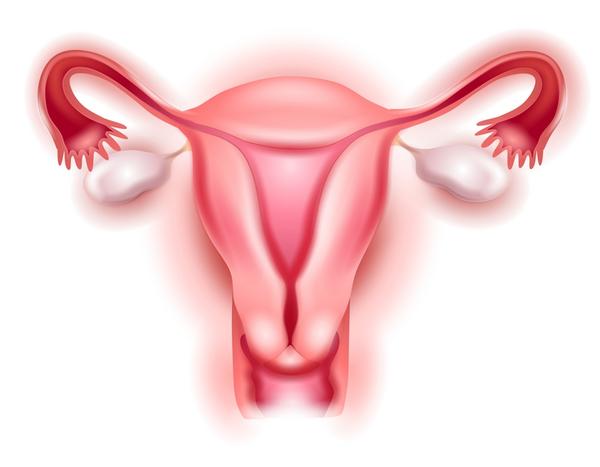Each representative of the weaker sex should regularly visit a gynecologist and monitor the state of their female health. Various conditions of the cervix can be observed, and one of them is one in which the cervical canal is dilated. It is very important to understand what this is talking about. This is what we will find out in this article. We will find out the causes of this phenomenon, and also consider diagnostic methods and methods for its treatment. Carefully read the information provided in order to protect yourself and arm yourself as much as possible.
What is the cervical canal?
In fact, most women have only a general idea of the structure of their reproductive system. And the gynecologist will tell you what the cervical canal is (whether it is expanded or not), most women do not even think about it. But this organ of the reproductive system plays a very important role in the body.

The cervical cavity has a rather interesting structure. It represents a hollow channel, which can be compared with a spindle with two contractions at the ends. Such a cavity is located in the uterus, and has a length of about four to five centimeters. However, if a woman gave birth or had an abortion, then the cervical canal can be elongated to seven to eight centimeters. In some cases, it can be expanded. The cervical canal is the connection between the uterus and the vagina.
The inner surface of the cavity itself consists of epithelial cells that produce a special mucous secretion. This tissue consists of special receptors that can respond to the level of hormones in the body. That is why the amount and viscosity of menstrual mucus depends on what phase of the woman’s menstrual cycle for a given period of time.
As you know, determining pregnancy at a very short time is not always an easy task. However, an experienced doctor will be able to determine this by the color of the mucosa. If fertilization has occurred, it usually acquires a bluish tint.

The cervical canal is expanded or not, it can be determined only when visiting a gynecologist. The doctor inserts a speculum into the vagina, and thus examines the entrance to the cavity. If the girl has not yet given birth, then the entrance will look like a small dot. But in a woman giving birth, he will turn into a small gap.
What functions does
Sometimes gynecologists say that the cervical canal of the cervix is dilated. What this means, you can read on. In the meantime, you should find out what functions this hollow organ performs. Let us consider each of them in more detail.
Barrier and protective function
It is in this place that a special mucus is produced, which serves as an excellent barrier against various bacteria and viruses that penetrate the body from the outside. Such mucus can form a cork that provides reliable protection. Moreover, this cavity has its own unique immune system, capable of producing immune cells. Thanks to the cervical canal, the female reproductive system can be absolutely sterile.
Conception of Conception
Many patients are wondering why the cervical canal is enlarged. It is very important to find out if this is the norm or pathology in order to understand the state of your health.
As is known, for conception to occur, it is very important that the sperm goes a long way from the vagina through the cervical canal. We have already said that in this place a large amount of mucus is produced, which performs a protective function.

However, on certain days of the cycle (before the onset of ovulation), the mucus begins to liquefy, and as a result, a more alkaline environment occurs. In order for the sperm to pass to the egg, it is very important that the cervical canal of the cervix is slightly enlarged. This is what contributes to the onset of conception. Therefore, if the couple decided to have a baby, it is very important to choose the most favorable period for this. By the way, the mucus produced by the channel is able to weed out weak and non-viable sperm, so only the strongest and healthy ones will move to their goal.
Output function
Blood and pathological discharge pass through the cervix. If the channel is in a pathological condition, then the output of these secretions will be impaired, which means that there is a greater likelihood of inflammatory and infectious diseases.
The birth canal
If the cervical canal is dilated throughout, then most often this indicates the onset of childbirth. During the birth process, centralization and shortening of the cervix occurs directly during labor.
How to understand that the cervical canal is dilated
There may be several reasons for this. In a normally developed nulliparous woman, the maximum channel width is usually up to eight millimeters. However, if this indicator increases, this may indicate the presence of pathology. If the representative of the stronger sex has become pregnant, then the cervical canal is closed. But the extension is usually observed in such cases:
- The internal pharynx is expanded to two millimeters. In this case, the cervical canal is expanded in the middle third.

- Slit-like expansion in the upper third can also be observed, which is usually accompanied by the active work of the glands.
- Expansions include the case when the cervical canal is dilated along its entire length. At the same time, softening of the uterus and shortening of its neck are also observed.
- There is also a condition in which the cervical canal is funnel-shaped and the internal pharynx is closed.
Reasons for expansion
In fact, the reasons for the occurrence of such a state are many. If the cervical canal is not dilated, what does this mean? Usually, if it closes and a mucous plug forms at its end, then this indicates that the woman has become pregnant. However, if the channel is expanded during the pregnancy itself, then this will indicate its abortion.
There are also other reasons for the expansion. Let's consider which ones:
- In the cervical canal, polyps or cysts are present. In this case, most often the cervical canal is dilated, and anechogenic contents are present. This content most often includes fluid or blood.
- The presence of other benign formations in the canal, such as sarcoma or fibrioma. However, the occurrence of malignant tumors is not excluded.

- Expansion can occur in the presence of pathologies such as endometriosis and adenomyosis, as well as in the occurrence of inflammatory diseases and pathologies that are sexually transmitted.
In the fair sex, capable of bearing offspring, expansion can be observed after an abortion, childbirth, as well as during some diagnostic procedures. However, the condition soon normalizes, as the body needs a recovery period.
With the onset of menopause, both expansion and narrowing of the canal can occur. Typically, in postmenopausal women, the cervical canal is not dilated. What does it mean? This suggests that the woman’s reproductive age has ended, and the level of female hormones in the body has decreased significantly. The channel can narrow to more than three millimeters. Subsequently, its overgrowing is usually observed.
What is the danger
If the cervical canal is dilated, and the remaining indicators are normal, then usually this does not pose a mortal threat to the fair sex. However, most often this phenomenon indicates that in the female reproductive system there are some pathological processes that require diagnosis and the selection of the optimal treatment method.
If the cervical canal expands during pregnancy, then this can be fraught with serious danger. Consider what are the possible risks:
- If a woman is in the early stages of pregnancy, then there is simply a huge risk of spontaneous abortion. During an ultrasound examination, a phenomenon such as uterine hypertonus is also usually diagnosed.
- There is such a thing as isthmic-cervical insufficiency, which can be diagnosed starting from the second trimester of pregnancy. Usually this phenomenon leads to its interruption, since the baby can be born prematurely.

That is why if a pregnant woman was diagnosed with a phenomenon such as expansion of the cervical canal, it is very important to take all kinds of diagnostic measures in time and urgently prescribe the necessary treatment to the patient.
Diagnostic tests
Usually, during an initial gynecological examination, changes can be noticed only if the external pharynx is in an expanded state. But to obtain more accurate results, they usually conduct such a diagnostic procedure as ultrasound. The process of measuring the cervix is called cervicometry. Maximum results can be achieved by conducting MRI of the pelvic organs. Typically, this procedure is carried out if the patient has already been discovered any pathological processes in the reproductive system.
It is also very important to take a smear. With its help, you can determine the presence of inflammatory processes, as well as sexually transmitted diseases.
Treatment methods
Depending on why the cervical canal is dilated, and the treatment method will be selected. If polyps or tumor formations were found in it, then in this case, doctors usually resort to surgical intervention. At the same time, the representative of the fair sex has the opportunity to maintain the functions of the reproductive system. However, if the formations become malignant, then in this case a radical intervention should be performed, which is usually accompanied by the use of radiation and chemotherapy.
In the presence of endocervix cysts, as well as cervicitis, doctors usually prescribe conservative methods of treatment, which include antibacterial as well as anti-inflammatory drugs (Azithromycin, Cefixime, Erythromycin, Doxycycline). If a woman has been found to have sexually transmitted diseases, then in this case she should be registered. At the same time, a test should also be passed, and if necessary, treatment should begin with her sexual partner.
If a woman was found to have adenomyosis, then in this case a complex conservative treatment is prescribed, in which anti-inflammatory and hormonal drugs are used (Marvelon, Dufaston, Anteovin, Dysmenorm). In some cases, doctors also recommend that the fairer sex undergo additional rehabilitation therapy, which includes the use of vitamin supplements, absorbable medications, as well as physiotherapy. If conservative methods of treatment do not give the desired result, then in this case, doctors decide on surgical intervention.

If the expansion of the cervical canal was detected during the course of pregnancy, then in this case the woman should be urgently hospitalized, as in this case there is a high risk of a miscarriage or premature birth. In this case, the patient is prescribed hormonal medications, antispasmodics, vitamins, and everything is done to prevent placental insufficiency. If necessary, such protective measures are also carried out:
- The imposition of special sutures on the cervix, which are usually removed at the thirty-eighth week of pregnancy;
- Sometimes a pessary is installed. This procedure is a dressing on the cervix of a special latex ring, which does not allow it to open. Most often, this method is used on its own, and sometimes in combination with suturing.
findings
Every woman should monitor the state of her health, including the health of the reproductive system. It is very important to regularly visit a gynecologist to carry out a routine examination. Usually, the expansion of the cervical canal does not occur on its own (unless, of course, this applies to the natural process of childbirth). Most often, it signals that infectious and inflammatory processes, as well as benign or malignant formations, are present in the female reproductive system. Therefore, do not ignore visits to the gynecologist, especially for women during pregnancy. Timely provided diagnostic and therapeutic measures can protect your health, as well as the life of your unborn baby.
Take care of your health right now. This will help you eliminate further risks and dangers. Take care of yourself.